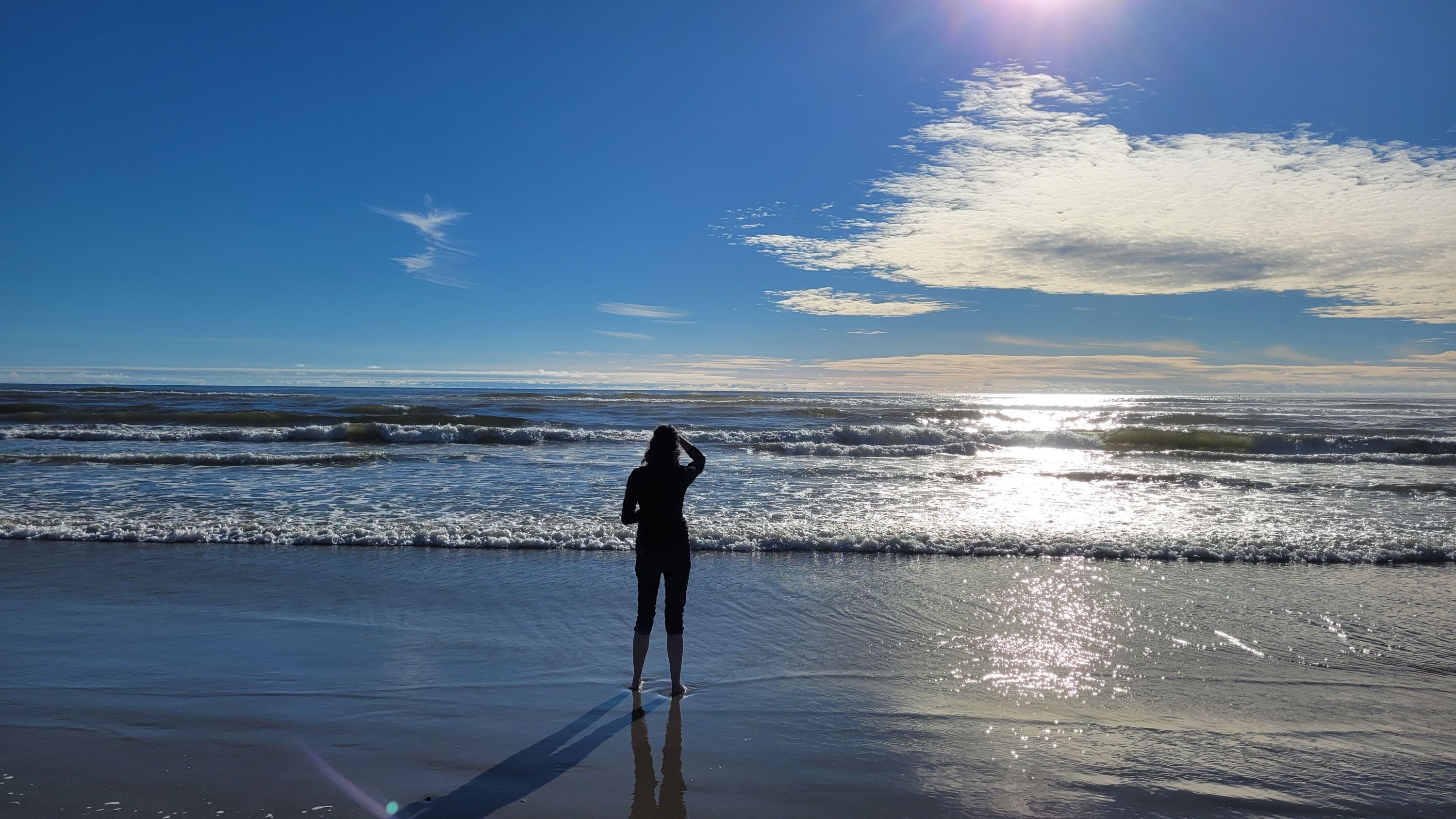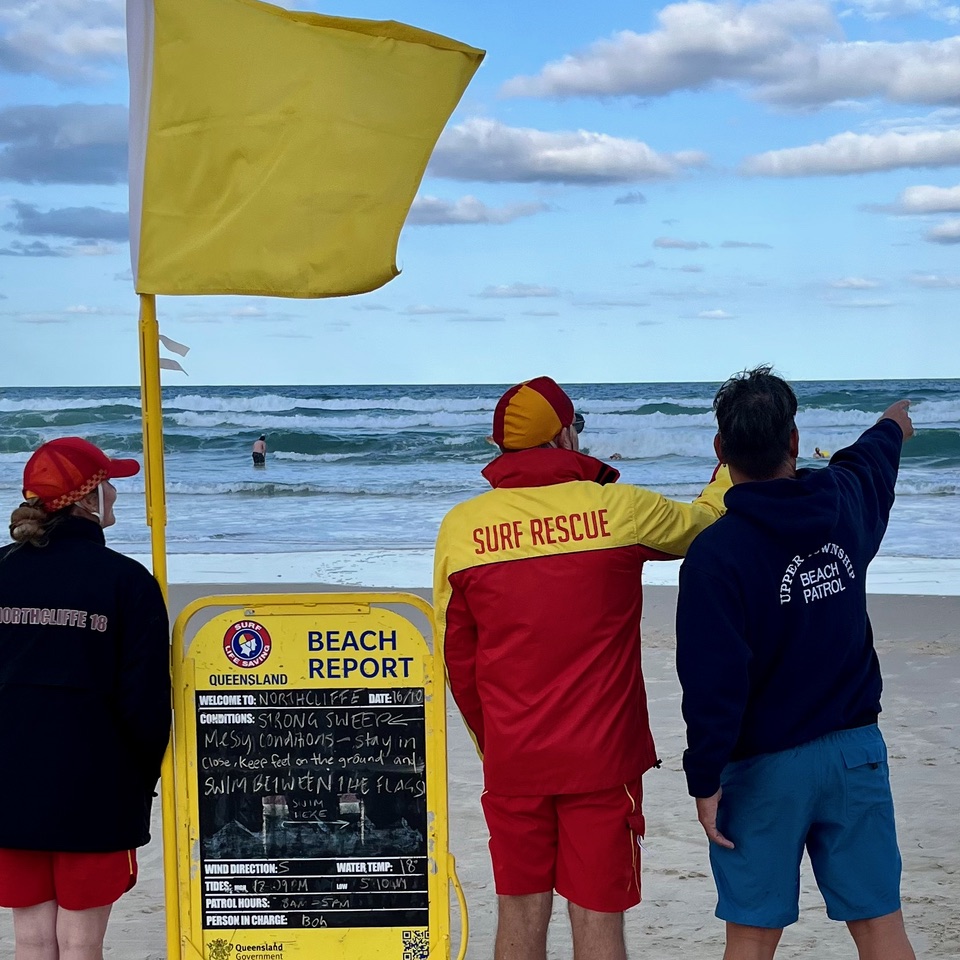Fireworks, Weather and Waves: What to know, see and do for any holiday beach visit
- By Bruckner Chase
- Jul 4, 2024
Bruckner Chase – Ocean Positive Foundation, Host of NOAA’s “Wave Safe” Series
Beaches and fireworks are a great combination for a 4th of July celebration, but those ocean waters on any day are dramatically different than pools and inland waters closer to home. Any summer holiday beach trip can stay safe and fun by knowing forecasts, understanding conditions, and remembering to respect the ocean before you act.

Sara Y. - Midwest girl meets the Pacific
The ocean and larger inland bodies of water that are impacted by wind and weather are called Dynamic Open Water, waters that can change quickly and go from being safe to dangerous if you don’t know how to read conditions and understand their impact on anyone’s experience on, in or near the water. Even the most confident pool swimmers can quickly find themselves in dangerous conditions, and a few facts can fill the gap between “Knowing How to Swim,” and being “Safe and Water Confident” at the shore.

Safe beach trips start before feet hit the sand and demand situational awareness until the toys and towels are packed back in the car. Here’s some of the knowledge to bring and the skills to unpack what you see so everyone stays safe this summer holiday.
- Know the Air and Water - Arrive knowing both the weather forecast and the coastal forecast that includes water temperatures, wave heights, swell period, wind, current warnings and tides. Weather reports from stations just a few miles inland from the beach may be dramatically different from what a beach visitor will encounter on the sand. Conditions like dense, localize fog, water temperatures and wind directions relative to a specific beach may not be reported inland, but can dramatically impact the safety of any beach trip.
- Survey the Scene for 10-15 - From a safe place in the dunes or above the beach survey the near shore area for ten to fifteen minutes just like any surfer or lifeguard. Fill in the knowledge from the forecasts with location information like the exact beach and the name of the access point leading to the water. When calling for a lifeguard or activating 911 giving a precise location can save time and lives. While watch the water look for where the waves are breaking, how frequently the waves are breaking and gaps in the waves that may indicate rip currents. Look along the shore for jetties or rocks that may indicate hidden dangers under water. While looking towards the ocean note if the winds are at your back or in your face. Winds strong enough to pick a towel up off the sand can create challenging conditions for even strong swimmers in the surf with strong winds blowing along the beach potentially generating fast moving long beach currents that can quickly sweep anyone along the beach and potentially into more dangerous conditions. White caps beyond the breaking waves can indicate even more turbulent conditions that are tough to navigate for anyone other than an experienced ocean lifeguard. Winds at your back may make the water look calmer but can also push a child on a boogie board or adult on a raft out to sea. Finally, look for lifeguard stands, warning signs and flags that will tell you more about the level of risk at that beach. Not sure what you see? Ask the lifeguard.
- Stay Situationally Aware on the Sand - While you are at the beach keep an eye on family and friends while watching for changing conditions. On any guarded beach lifeguards may change the color of warning flags as conditions change during the day. An early morning green flag indicating a low level of risk may be switched to Yellow or Red in the afternoon.
- Before the First Wave Hits - If you head into the surf know that ocean conditions can be far more challenging than a pool. Most people are unable to swim more than 50 meters without resting, and anyone who may get pulled out in a rip current could have to swim 3-4X that distance while also navigating through pounding surf to get back to safety.
- Minimizing the Impact - Quick tips for navigating the impact zone where waves are breaking:
- Eyes on the Waves: Even when swimming back in keep glancing back for larger breaking waves that can drive you into the sand, hold you under or cause serious injury.
- Knifing Through Waves: Turn your hips sideways with on foot behind you to brace against the power of the waves.
- Duck Don’t Dive: In water deeper than your waist with waves breaking even higher. Keep your arms outstretched to protect your head and neck while ducking under the breaking waves digging your fingers in the sand underwater. Pop up, looking for the next wave and move in or out of the water in the breaks between waves.

Whatever coastline is in your summer plans always respect the water and remember that where weather, water, waves and people meet stay situationally aware to keep the lifeguards dry and your holiday safe and fun.
